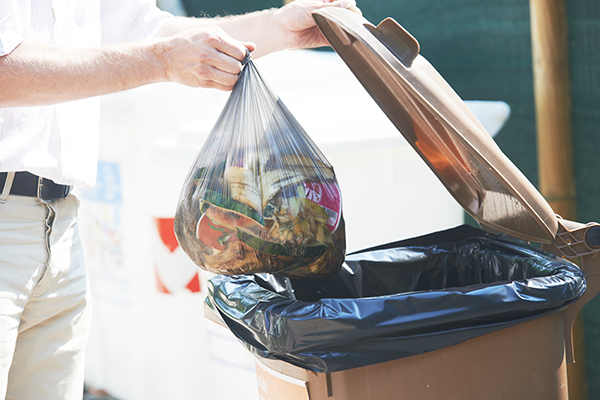Your Guide to Approved Food Safety Training Programs in 2025
Early in my foodservice career, I persuaded the owners of the restaurants I managed to train all our production employees in food safety. Knowing that the cost, both in terms of training materials and employee hours in training would be substantial, I tried to minimize the cost by becoming a certified instructor of the course I wanted to offer and teaching it to our employees myself. Little did I know at the time that my experience doing this would shape my career for the next few decades.
I knew that both our employees and management had areas where we could strengthen our food safety practices. We weren’t doing poorly, but there was room for improvement. Today, research and scientific studies show training alone doesn’t necessarily lead to better on-the-job food safety behavior. However, we also know that knowledge is essential. Before employees can improve their behavior, they must first understand the proper food safety procedures required in our operations. Training isn’t the finish line, it’s the foundation of a strong food safety culture.
Following proper food safety isn’t just a checkbox, it’s a fundamental responsibility for anyone in the foodservice industry. The 2022 FDA Model Food Code, Section 2-102.11, mandates knowledge requirements for the person in charge of food establishments. This requirement can be satisfied through three methods: maintaining a record with no priority violations during inspections, being a certified food protection manager who has passed an accredited program exam, or successfully responding to inspector questions about identified food safety topics.
While you don’t need to have every employee trained in food safety, I’ve always believed in going beyond the minimum. If my business were ever the source of a foodborne illness outbreak, I would want to know that I had done everything in my power to protect my guests. While I am no lawyer, I certainly wouldn’t want my lack of training among employees to be a fact that is ever presented to a jury in a food safety lawsuit. Training the employees who work on the front lines is the very least we can do. After all, it only takes one mistake, one employee, one bad day for a foodborne illness outbreak to occur.
With the proliferation of online training available in all facets of industry, it is important that you select a food safety program that is an approved course. Any program selected should be accredited by the American National Standards Institute National Accreditation Board in partnership with the Conference for Food Protection. This accreditation ensures the certification program meets rigorous national standards for food safety and public health. This accreditation program emerged in 2002 as the only program of its kind in the United States and has received letters of commendation from both the U.S. Department of Health and Human Services and the Centers for Disease Control and Prevention.
……training isn’t the finish line, it’s the foundation of a strong food safety culture……
As of 2025, 12 organizations offer American National Standards Institute-accredited food protection manager certification exams, two more than when I last compiled this list back in 2023. Here are the providers currently available:
- AAA Food Handler (AAA Trainers Inc.)
- Always Food Safe Company
- Certus/StateFoodSafety
- DSBWorldWide, Inc. (EduClasses)
- Learn2Serve (360training.com)
- My Food Service License
- National Registry of Food Safety Professionals (NRFSP)
- National Restaurant Association Solutions (ServSafe)
- Responsible Training (Safeway Certifications, LLC)
- Relish Works, Inc (Trust20)
- Userve
- World Food Safety Organization
Each of these programs is fully accredited and accepted in most jurisdictions that mandate food protection manager certification. However, it’s important that you verify with your local health department that they recognize your chosen certification before making a purchase, as some counties or cities may have specific preferences.
When selecting a food safety training program, there are several factors to consider. First and foremost is the format of the training. Most programs now offer 100% online training and remote-proctored exams, making certification more accessible than ever. Some also provide in-person options through testing centers. Online courses typically allow you to start and stop at your convenience, fitting training around the busy schedule of our employees.
Prices can vary significantly among providers, ranging from approximately $50 to $150 for the complete package (training plus exam). Be aware that some providers advertise low prices but add proctor fees at checkout, or perhaps don’t include proctor fees leaving you to pay additional costs when it comes time to take the exam, while others include all costs upfront. Training-only and exam-only options are also available for those who already have preparation materials or previous training.
It is important to remember that not everyone who completes the training and sits for the exam will pass on the first try. Thus, another pricing consideration is how many times the examinees may retest and how much that retest costs. Some programs allow a second retest for free; some sell different levels of test packages that include a second retest, while others charge for each additional retest.
Consider how individual employees learn best and which language they prefer. Some programs offer extensive video content, while others focus on text-based learning with practice tests. Most provide study guides, glossaries, and full-length practice exams you can take multiple times before your official certification exam. Several of the programs are now offered in multiple languages as well but be sure to investigate this before you make the purchase.
I cannot tell you which program is definitively “the best”, because that depends entirely on how you learn, how you prefer to take the exam, and your budget. What I can tell you is that all ANSI-accredited programs meet the same rigorous standards. Look into each option, compare their offerings, and use your best judgment.
Remember, protecting your guests from foodborne illness isn’t just about compliance, it’s about professional pride and responsibility. Whichever program you choose, you’re taking an important step toward ensuring the safety of everyone who trusts you with their food.
Have you had experiences with any of these training programs and exams that you’d like to share? Drop me a note at foodsafety@foodhandler.com. I’d love to hear about your experiences and may be able to use them in a future blog. Risk Nothing.
READ MORE POSTS
Getting Your Playbook for Food Safety Organized
As anyone who has ever worked in a foodservice operation knows, from the time food is received in your establishment to the time it is served to your customers, following proper food safety practices is crucial. What many don’t often think about is this time really should extend from the time the manager places their orders with their suppliers (including which purveyors you utilize), through the time the food is consumed – even if that consumption occurs off your premises and days after the original order was picked up by the guest. This is something that has certainly been highlighted by the pandemic as customers across the nation are utilizing take-out, curbside to go, and third-party delivery options more so now than ever before.
Getting Started with Building the Infrastructure
Hopefully in our first January blog, we convinced you of the importance of establishing an infrastructure within your operation to support a safe food culture. So, how does one go about doing this? Well, like any major project, break it into small bites. In our opinion, having a written guide for employees that documents expectations related to food safety basics of employee health and hygiene, temperature controls, and cleaning and sanitizing is the first step. Having this documentation serves as a reference for training and helps fulfill the mission of most foodservice operators which is to serve safe, quality food.
Food Safety Resolutions for the New Year
Finally, 2020 is in our rearview mirror and we can all turn the page to 2021! Resolutions for the new year might be more of the same from prior years (lose weight, exercise more, less screen time, etc.) OR you may have identified new practices to implement in your operation. If the latter, likely goals included some practices related to food safety – especially given the turmoil of 2020 and heightened concern by customers. It is our philosophy that attention to safe food handling practices is a win-win for any operation because of the direct relationship between food safety and food quality, which in turn leads to customer satisfaction. This past year has also demonstrated that attention to safety can affect the bottom line. Thus, the topic of our first SafeBites webinar for 2021 is on the topic of the return on investment of food safety, it is scheduled for January 20, so register now and please plan to attend.
To Toss or Not to Toss? That is the question.
Our first blog for the month emphasized the basic safe food practices needed to keep you and your guests healthy (and happy!), especially during these times of COVID. The impact of foodborne illness can range from an uncomfortable few days to hospitalization or death. Foodborne illness IS preventable and the steps taken to keep food safe also maintain quality of food, and ultimately profitability. Think of attention to food safety as part of quality control and a win-win business strategy. Knowledge about food safety can be helpful when controlling costs as making wise decisions when determining the fate of unserved food can affect the bottom line.










